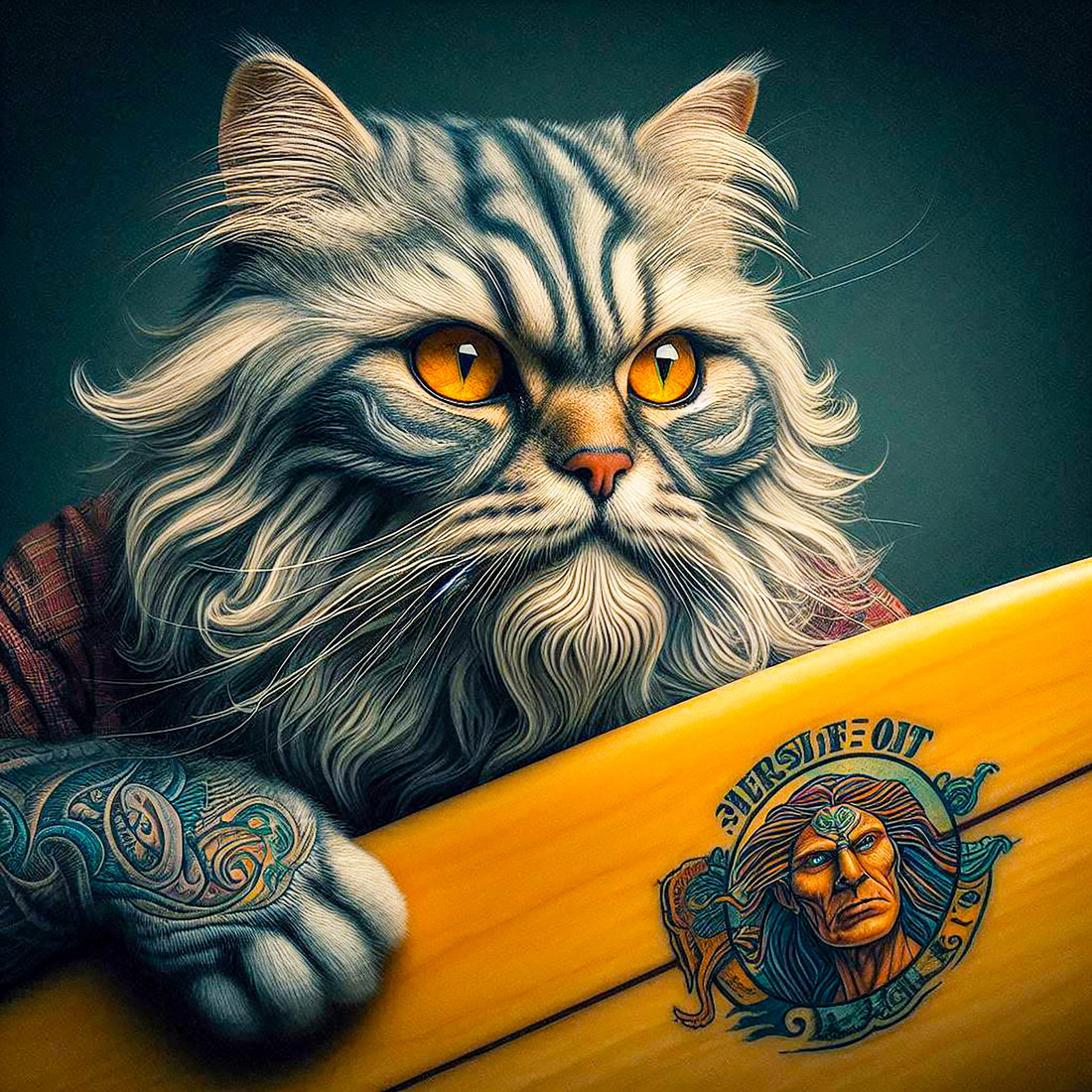
Persian Cat
Share
Overview:
• Origin: The Persian cat has ancient roots, believed to have originated in Persia (modern-day Iran) around the 1600s. They were brought to Europe in the 1600s, where they quickly gained popularity among royalty and aristocrats.
• Size: Medium to large, typically weighing between 7-12 pounds, with males usually larger than females.
• Lifespan: Approximately 12-16 years, with proper care.
Appearance:
• Coat: Persians have a long, flowing double coat that is soft and thick. Their fur requires regular grooming to prevent mats and tangles. They come in various colors and patterns, including solid, tabby, bicolor, and Himalayan (pointed).
• Body: They have a compact, stocky body with a broad chest and short legs, contributing to their sturdy appearance.
• Face: Persian cats are known for their distinctive round face, short muzzle, and large, expressive eyes, which can be copper or blue, depending on the coat color. Their flat facial structure gives them a unique look that many find irresistible.
Personality and Temperament:
• Gentle and Affectionate: Persians are known for their calm and gentle disposition. They are typically very affectionate with their owners and enjoy being pampered and cuddled.
• Laid-back: These cats tend to be less active than some other breeds and prefer a relaxed lifestyle. They enjoy lounging in comfortable spots and may not engage in high-energy play.
• Social: While they are generally friendly, Persians can also be somewhat reserved. They enjoy companionship and are typically good with families, including children and other pets, as long as they are introduced properly.
Health and Care:
• Common Health Issues:
• Brachycephalic Issues: Due to their flat face, Persians may experience breathing difficulties or dental problems, so care must be taken regarding their health.
• Polycystic Kidney Disease (PKD): A genetic condition that can affect the kidneys, leading to kidney failure. Responsible breeders will screen for this condition.
• Eye Issues: They may be prone to tear staining and other eye problems, requiring regular eye care.
• Grooming: Their long coat requires daily grooming to prevent mats and tangles. Regular bathing is also recommended to keep their coat clean and healthy.
Interesting Facts:
• Show Cats: Persians are popular show cats and are often featured in cat competitions. Their beauty and distinctive appearance make them favorites among judges and cat lovers alike.
• Cultural Icons: Persian cats have been featured in various forms of media, including movies, cartoons, and literature, contributing to their status as cultural icons.
Temperament with Kids and Other Pets:
Persians generally get along well with children and other pets, but their laid-back nature means they may prefer a calm environment. Supervised interactions are important, especially with younger children, to ensure everyone is comfortable.
Training and Socialization:
While Persians are intelligent, they may not be as eager to learn tricks or commands as some other breeds. However, they respond well to gentle training methods and socialization, helping them adapt to different environments and experiences.
Exercise and Activities:
Persian cats enjoy gentle play but don’t require extensive exercise. Interactive toys and scratching posts can provide entertainment and keep them physically active. Creating a comfortable, safe environment for them to explore is also beneficial.
Summary:
CyberMutz.com (Dog-Themed Apparel & Accessories)
“CyberMutz.com – Explore a unique collection of dog-themed apparel, accessories, and gifts for pet lovers. Shop stylish, high-quality designs featuring your favorite dog breeds!” Category Page Descriptions: Dog Breed T-Shirts: “Show off your love for dogs with our exclusive breed-themed T-shirts. From German Shepherds to Chihuahuas, find high-quality, comfortable tees celebrating your favorite pup!” Dog Breed Pet Tank Tops: “Keep your furry friend stylish and comfortable with our dog breed-themed pet tank tops. Perfect for small and large dogs, these unique designs are a must-have!” Funny Dog-Themed Apparel: “Love dogs and humor? Our funny dog-themed apparel blends style with witty canine-inspired designs. Shop now for T-shirts, hoodies, and more!” Personalized Dog Merchandise: “Customize your dog lover’s gear with our personalized pet-themed apparel and accessories. Create a one-of-a-kind look for yourself or a perfect gift for a fellow dog enthusiast!”
CyberPussyKatz.com (Cat-Themed Apparel & Accessories)
“CyberPussyKatz.com – Celebrate your love for cats with our premium collection of feline-inspired apparel and accessories. Purr-fect designs for every cat lover!” Category Page Descriptions: Cat Breed T-Shirts: “Showcase your favorite feline friend with our stylish cat breed-themed T-shirts. From Maine Coons to Siamese, find the perfect tee for cat lovers!” Funny Cat-Themed Apparel: “Express your quirky side with our funny cat-themed T-shirts, hoodies, and more. Pawsome designs for those who love cats and humor!” Personalized Cat Merchandise: “Make it personal with custom cat-themed apparel and accessories. Create a unique gift or a special piece just for you!”
CyberMunkiez.com (Monkey-Themed Apparel & Accessories)
“CyberMunkiez.com – A fun collection of monkey-inspired apparel and accessories. Perfect for primate lovers who enjoy bold, playful, and unique designs!” Category Page Descriptions: Monkey-Themed T-Shirts: “Go bananas over our monkey-themed T-shirts! Whether you love capuchins, chimps, or gorillas, our designs bring out your wild side.” Funny Primate Apparel: “Add a touch of humor to your wardrobe with our hilarious monkey and ape-inspired apparel. Great for animal lovers and jungle enthusiasts!” Custom Monkey Merchandise: “Make it yours! Personalize your favorite monkey designs on T-shirts, hoodies, and more for a one-of-a-kind look.”
